YOU'RE NOT FERTILIZING YOUR NEPENTHES ENOUGH
No, seriously. Fertilize them more.
For years, I’ve complained about the speed of highland Nepenthes, saying things like:
Nepenthes lowii? More like Nepenthes slowii!
Maybe my Nepenthes attenboroughii will flower in my lifetime.
The patience is part of the fun (smiling, as a single tear drips down my face).
I eventually got tired of staring at plants that never seemed to get bigger. Feeling impatient, I began experimenting, testing various brands of fertilizer at various concentrations. My methods were far from scientific, but hey, anecdotal conclusions drawn from a large sample size are better than nothing. Anyway, I‘ve come to two conclusions:
Most people don’t use the right fertilizer product.
Most people don’t fertilize their Highland Nepenthes nearly enough, at least if they want them to grow rapidly.
Don’t get me wrong—these plants are slow. They’re not going to grow like (a) weed. But, they’re not that slow. With proper fertilization, most species will increase in diameter, leaf after leaf. They’ll be robuster, hardier, and more resilient.
An Incredibly Scientific Process
I’ve tried lots of fertilizers, such as:
Several brands of liquid, urea-free Orchid fertilizer
Maxsea, a seaweed based fertilizer
Osmocote timed release
Nutricote timed release
I’m not a fan of Urea-free liquid Orchid fertilizers. It’s hard to get that Goldilocks amount—either you put so little that there’s no effect, or you put too much and have to flush out the media (making it waterlogged, and your precious plant more prone to rotting out). They’re pretty labor-intensive to apply as well; it’s not easy to mix enough for an entire collection, and you have to do so roughly every 2-3 weeks in the summer to see any real results. It’s not fun to have to constantly think about when you last fertilized!
Max Sea is another liquid fertilizer (although not urea-free). I’ve separated it out, as it has somewhat of a cult following in the carnivorous plant world. It’s certainly the best of the group, and it appears to work pretty well. It’s gentle, effective as a spray/mist, and Sphagnum seems to like it. Unfortunately, it is just as labor-intensive/annoying to apply as any other liquid fertilizer.
Next, we get to Osmocote. I don’t like it. The pellets break open easily, releasing too much fertilizer into the soil or pitchers. Even when the pellets don’t break open, pitchers often react negatively, blackening at the bottom where the pellet sits. I also find that Osmocote doesn’t release all that well into soil over time. I’ve heard that the “timed release” shell on Osmocote is actually triggered by temperature rather than water. If true, this appears incompatible with use for cool-growing, highland Nepenthes.
Finally, we have Nutricote. Nutricote is my favorite child. It just works® (no, I’m not a paid actor or affiliate marketer). It’s actually timed release, triggered via water. It doesn’t burn pitchers. It doesn’t kill Sphagnum. You literally apply it twice per year. Anecdotally, it’s also the most effective fertilizer I’ve tried. Convinced? I am!
Three Simple Rules
So, here are my three rules. They’re simple, straightforward, and highly effective. I apply them to my entire collection of Highland Nepenthes. (Note: I offer this advice in good faith and am not responsible for any outcomes that you experience by following it. I don’t recommend fertilizing plants that aren’t already acclimated and healthy.)
Use Nutricote timed release fertilizer (18-6-8 is great).
For a 3” diameter pot, put around 3-4 pellets right on top of the soil. You can add another 1-2 pellets for every additional inch of pot. Then, water as normal! Repeat this twice per year.
If this is scary, you can add some pellets, wait a few weeks, add some more, etc. And, if you think you’ve overdone it, e.g. the plant stops pitchering, you can simply remove the pellets and flush the pot.
Put one nutricote pellet in every pitcher over 2” (or mature pitchers, for smaller species). You can put two, or even three pellets in large or especially rigid pitchers.
(Optional) Soaked coco husk makes a great growing medium for heavy fertilization, as you can soak/flush it if needed, and it’s airy enough that your plants won’t rot out afterwards.
Here’s Some Proof
I don’t have exhaustive before/after photos. I did, however, document a Nepenthes rajah growing from a seedling to a 6” plant in slightly over a year, as well as leaf jumps on numerous other slow-growing species. Hopefully these are compelling!
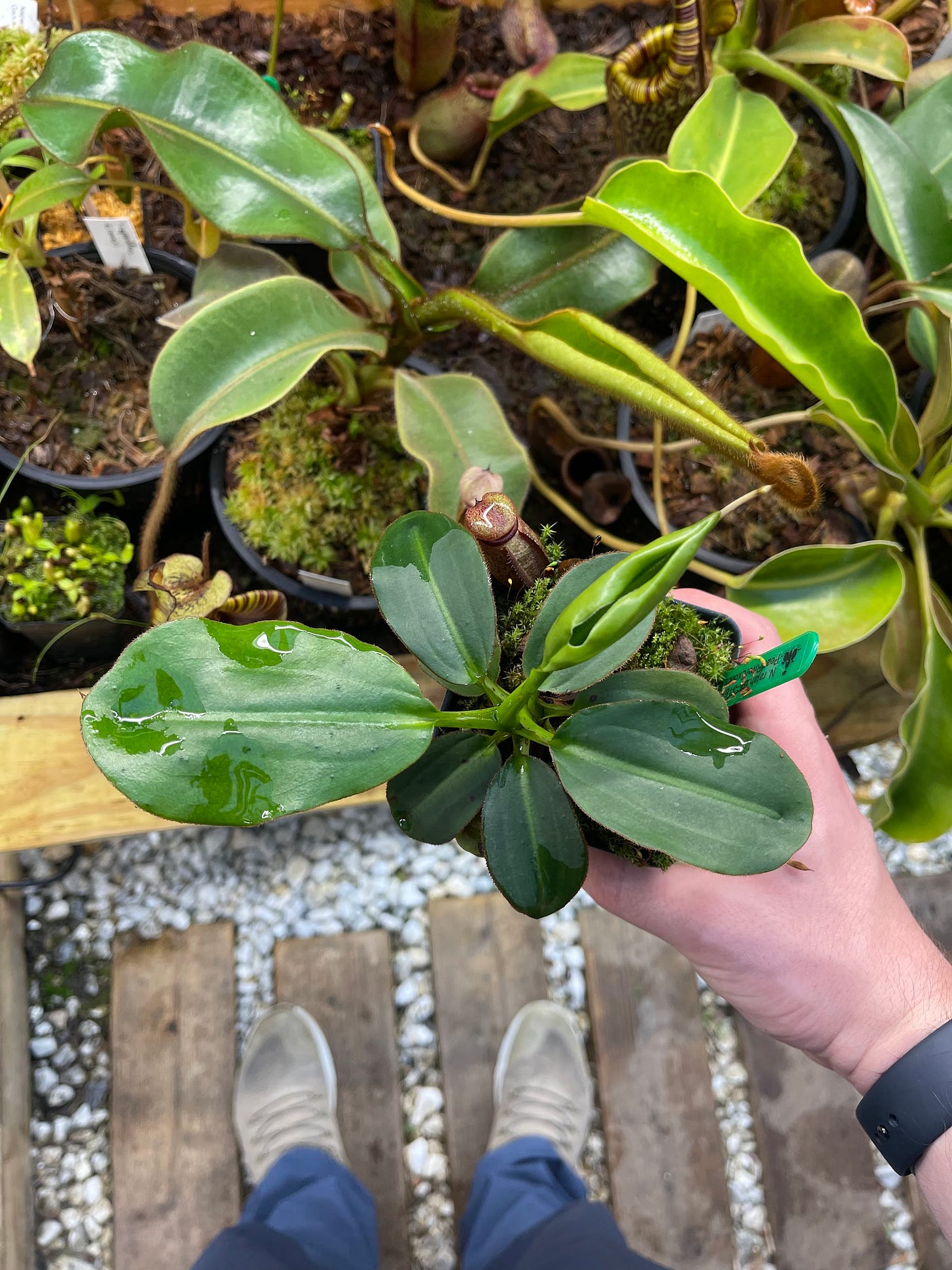
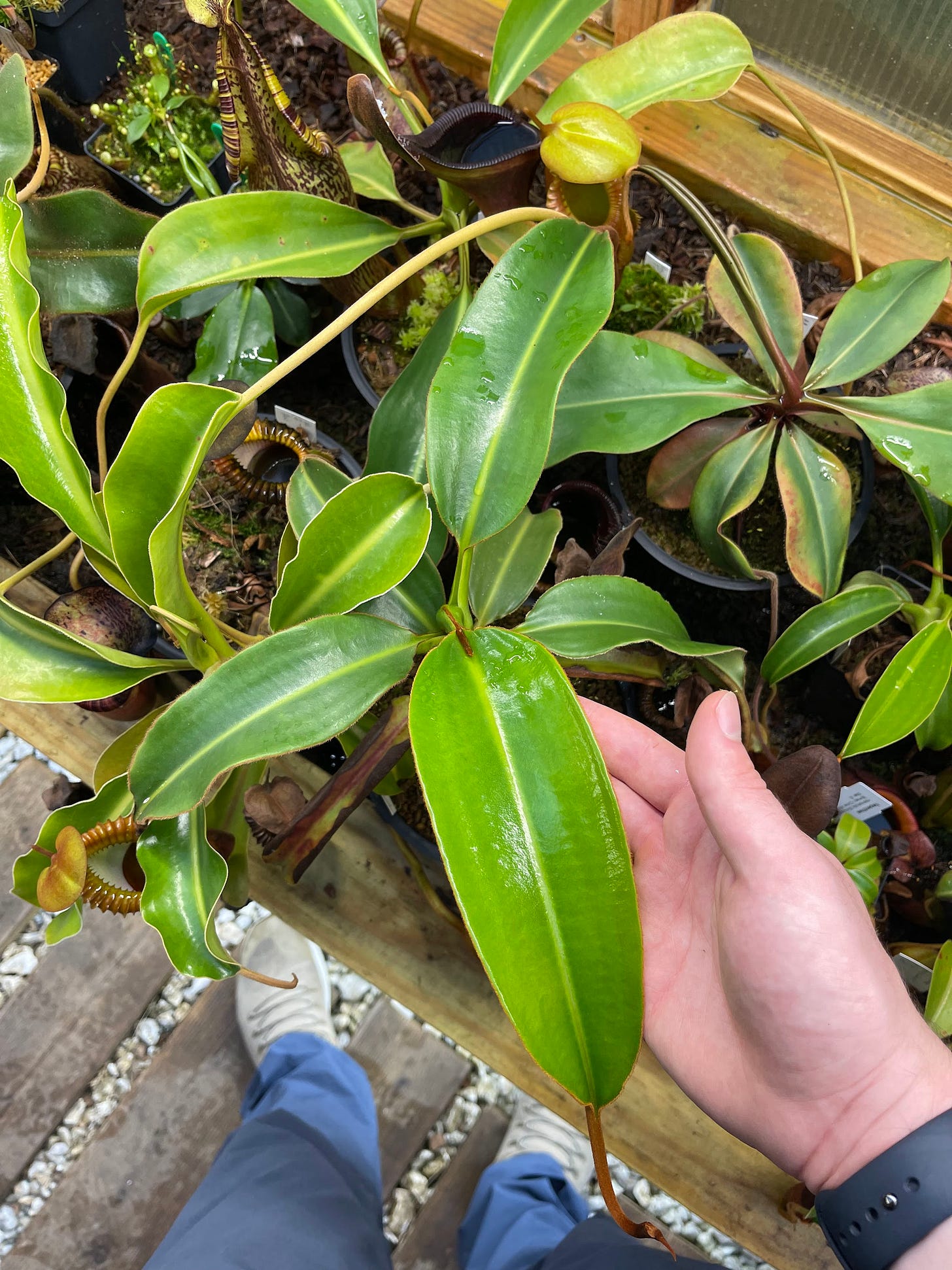


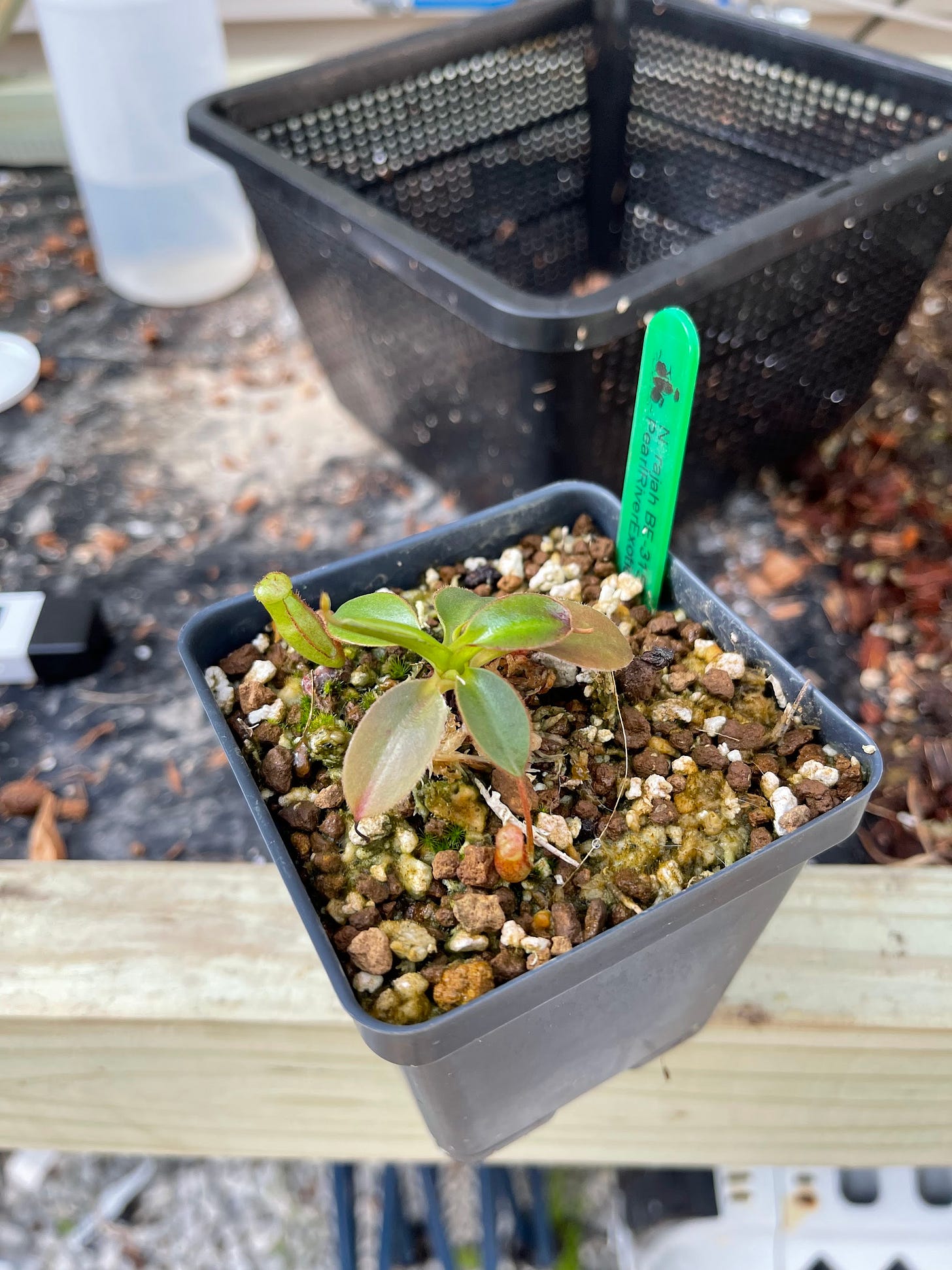

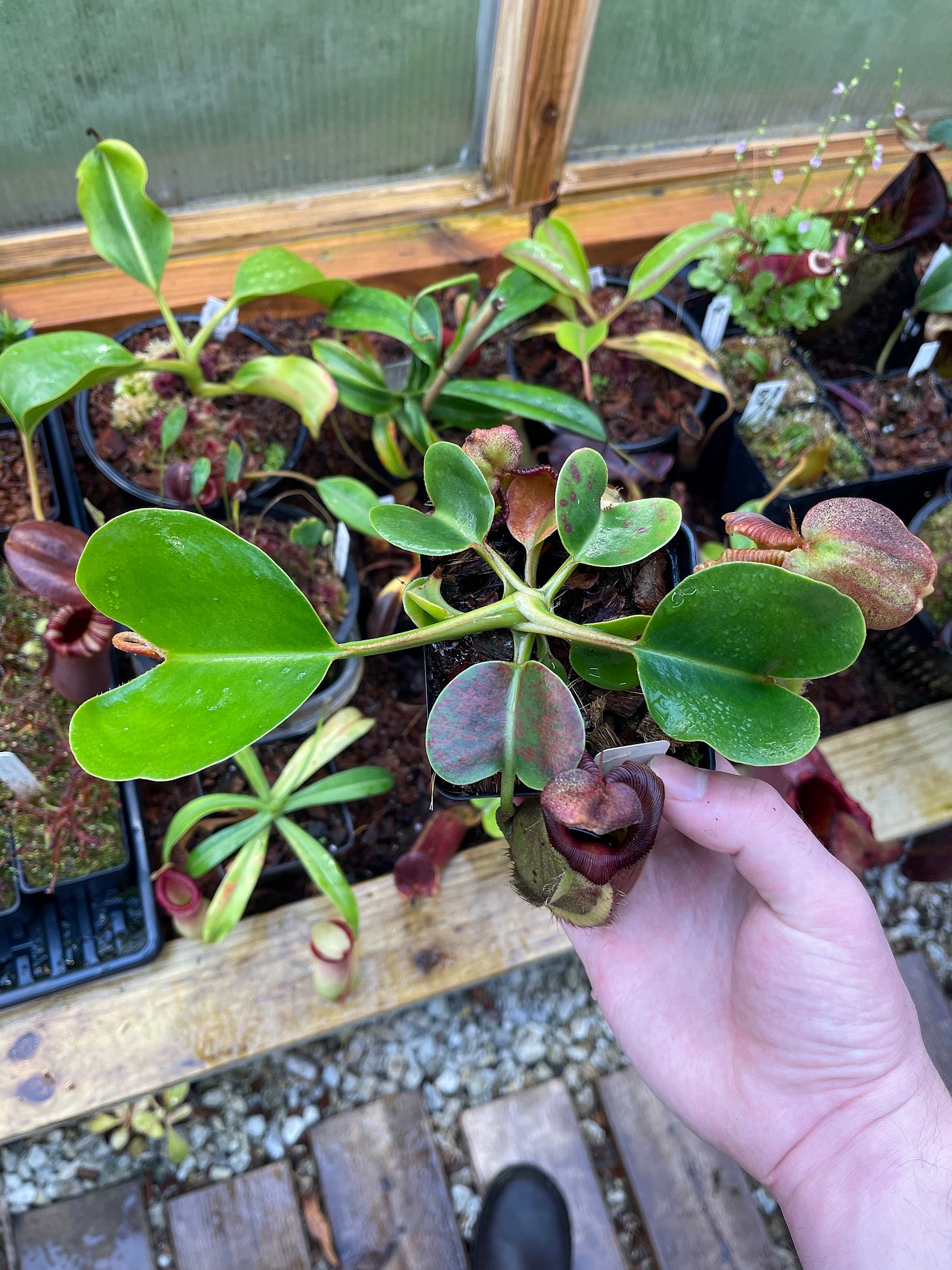
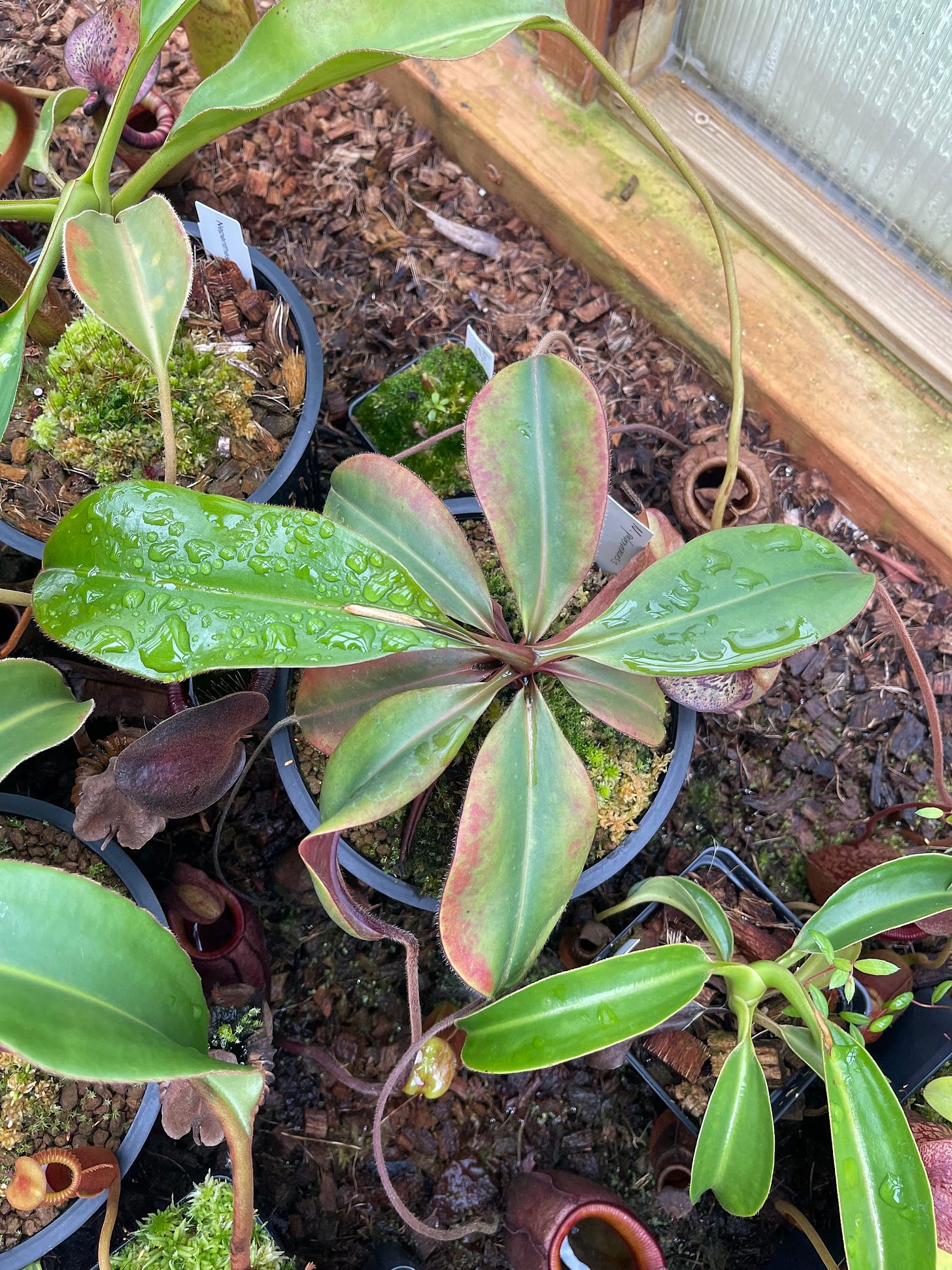

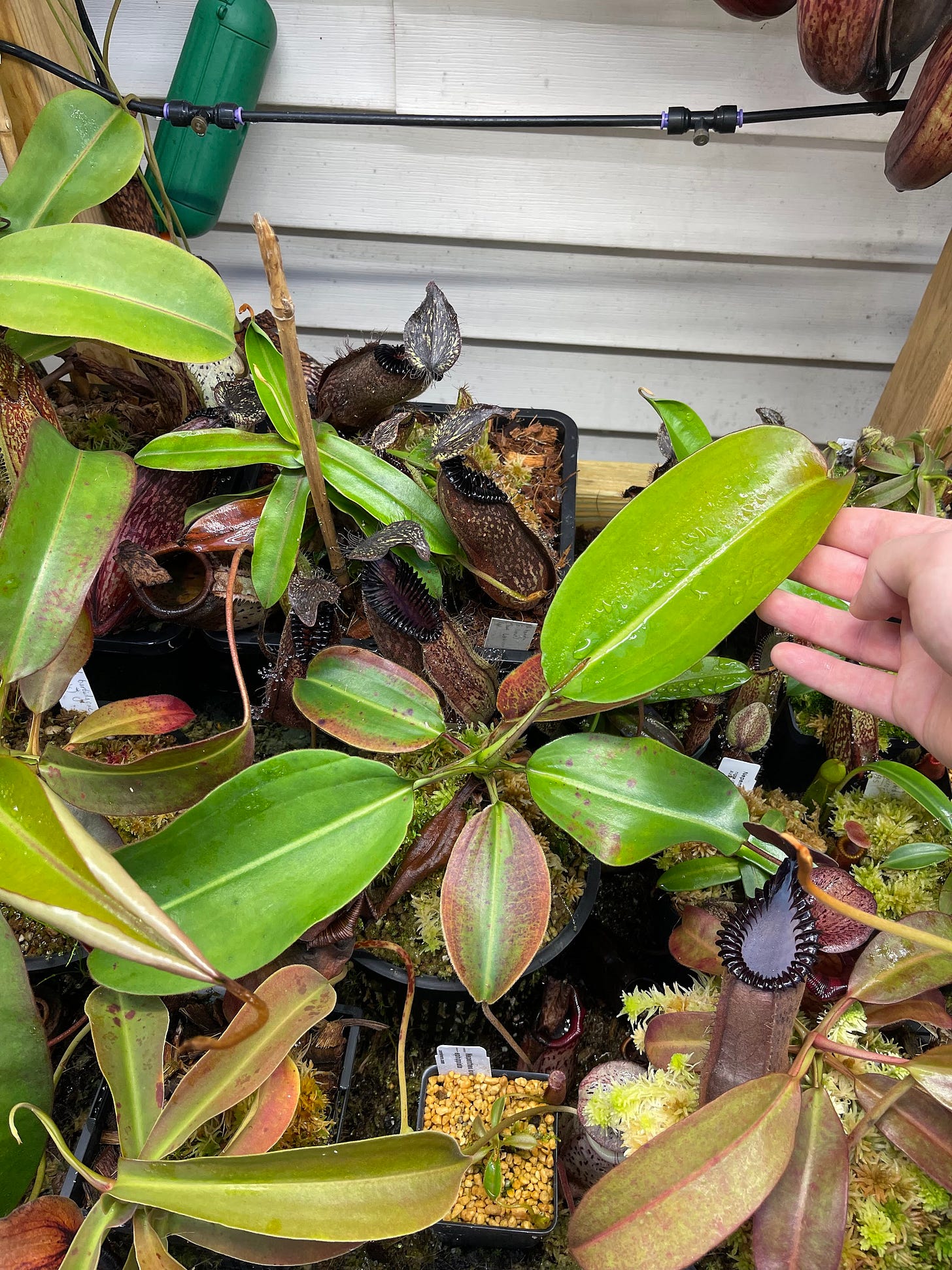
The proof is in the results, I need to try nutricote. Until now I've been putting 200EC liquid feed in the odd pitcher, including heliamphora and it works well too. For other carnivorous including cephalotus I use Betta Bio Gold fish pellets as these are balanced to resemble insects and work well too.
Hello! I bought some of this nutricote and I have a question. Will this work for other carnivorous plants? I have a wide variety. Like lowland pitcher plants, Sarracenias, Venus flytraps, and Sundews. I’d love to use this on them if it’s safe.